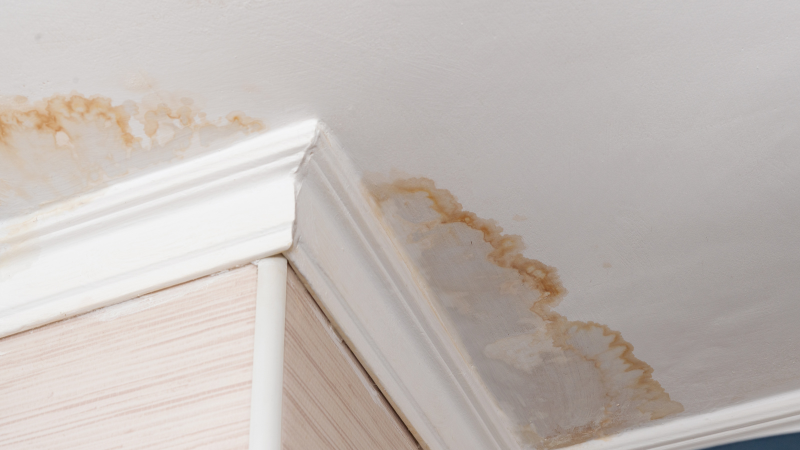Almost everyone may have their own unique theory involving How to Fix a Water Damage Bathroom.

The bathroom is incredibly susceptible for moist accumulation and potential water damage due to the frequent use of water in it. This article offers simple inspection methods to help spotting water damage risks.
The frequent use of water in the bathroom makes it extremely vulnerable for moist build-up as well as prospective water damages. By checking it frequently, you can decrease water associated problems.
The adhering to collection of evaluations is easy to execute and also must be done when in every three months in order to keep your restroom in good shape and to stop prospective water damages caused by the bath tub, the shower, pipeline joints as well as plumbing, sinks, cabinets, and also the bathroom
Do not overlook performing these evaluations and also be detailed while doing them. Bear in mind that these simple examinations can conserve you a lot of cash by supplying early signs for water damages
Bathtub as well as Shower
The shower and tub require unique interest and upkeep. Check the floor tiles as well as replace if fractured. Make certain that there is no missing grout in between the ceramic tiles. Inspect as well as replace fractured caulking at joints where the walls meet the flooring or the bathtub. Obstructed drains and also pipelines issues will protect against the tub from drying out as well as might suggest serious issues beneath the bath tub. Speak with an expert immediately to prevent architectural damage. Focus on discolorations or soft locations around the bathtub wall surfaces as they might suggest an inner leak.
Plumbing
Signs for water damages are hard to find because most pipes are mounted inside the walls.
Pay unique attention to flooring and also wall surfaces wetness and also stains as they may show an unnoticeable plumbing problem. Inspect dampness degrees in adjoining spaces too.
Sinks as well as Cabinets
Sinks and also cabinets are subjected to dampness and also humidity everyday as well as are typically forgotten. Examine on a regular basis under the sink and on the countertop over it. Fix any drip in the trap as it might recommend drain problems. Browse the sink, sluggish draining pipelines might indicate a blocked drainpipe. Change sink seals if they are cracked or loose.
The Bathroom
The commode is a vulnerable water junction. Check the water lines as well as search for leaks around the bathroom seat, in the tube, and also under the water tank. If you discover any kind of indicators of dampness on the floor around the toilet, check for leaks in the toilet rim as well as storage tank seals.
Understand that hanging commode dish antiperspirants enhances the possibilities for obstructions.
Water Damage Signs In The Bathroom To Avoid Cleanup
Musty smell
This is one of the easiest signs to catch because musty smells are so odorous. The damp, earthy, moldy smell should be a big red flag. The smell will develop when moisture gets trapped in surfaces, and begins to facilitate mold growth. Leaking pipes under cabinets, inside walls, and behind shower fixtures will cause moisture to stay trapped and not dry, which will lead to mold growth and spread. As soon as you notice any musty smells in your bathroom, have it checked for hidden water damage and cleanup signs.
Visible mold
If the smell isn’t there to give it away, sometimes you will actually see mold growth. Finding mold in your bathroom is a serious problem, because mold is very harmful to your health. By the time mold growth is visible, it also means that water damage has already occurred and been present for some time. The only way the mold problem can be resolved is to find the source of the moisture and get it stopped. To safely and adequately remove mold, you need to have professionals handle the remediation. Do not waste any time in getting mold problems addressed, fixed, and sanitized so that you can protect you and your family from the many respiratory symptoms caused by mold exposure.
Damaged floors
Bathroom floors should be able to withstand some exposure to water while still remaining in good condition. However, when excess exposure or water leaks occur, they will begin to damage even the most water-resistant flooring. If you notice any cracking, bubbling, staining, or warping on your bathroom floors, there is probably a water leak somewhere causing the distortion. If you notice areas of the floor have become softer, or even have a spongy feeling, there is probably damage to the subfloor. Subflooring is typically made up of plywood. When plywood is exposed to water or moisture, it will absorb it. Once it has become saturated, the weight of the excess water will cause the wood to swell and soften. Check the floors in your bathroom frequently to catch any of these sings before they lead to damaged subflooring.
Changes on walls
When water leaks behind walls, it will cause changes in the drywall. Peeling plaster, blistering paint, and soggy wallpaper are all good indicators that excess water is building up behind the wall. Water leaking behind drywall will cause it to swell and be soft to the tough. If you start to notice gaps along the trim of your walls, or where tile meets the wall, it could also be a strong indicator that there is a leak behind the wall. Any changes, distortion, or damage on the walls should be evaluated as soon as you notice it to prevent further water damage and cleanup.

I hope you liked our excerpt about How to Prevent Bathroom Water Damage. Thank you so much for taking the time to read through our short article. Make sure you take a moment to promote this write-up if you enjoyed reading it. Bless you for your time. Visit us again soon.
Get A Quote